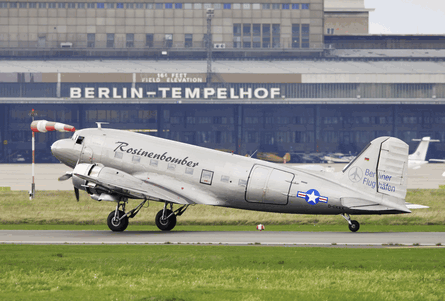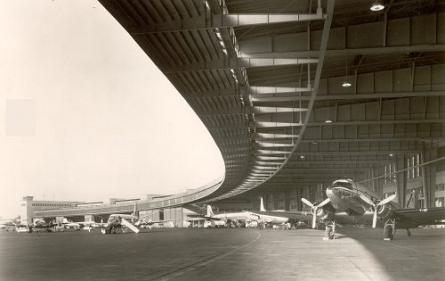Eighty-five years after being designated as Berlin Airport, the German capital's historic downtown Tempelhof Airport has closed with the departure of its last scheduled service and that of two vintage aircraft.
Tempelhof's closure, part of Berlin's plan to establish a single hub for the city, marks the end of a drawn-out battle to maintain operations at the station, which was central to the Berlin Airlift of 1948-49.
At a ceremony held inside its monumental 1.2km-long terminal yesterday, airport operator Berliner Flughafen's chief Rainer Schwarz paid tribute to Tempelhof's historical contribution, but added: "The building is too large, the area is too small. It does not make sense for 21st Century air transport to operate here."
 |
|---|
© Günter Wicker/Berlin Airports |
Air Berlin, Germania and InterSky have been offering special 'last chance' flights from Tempelhof. But Cirrus Airlines' flight 1569 to Mannheim on 30 October, operated by a Dornier 328, became the last regular airline service to leave.
Shortly afterwards, a few minutes before midnight, Lufthansa's preserved Junkers Ju 52 and Air Service Berlin's 'Rosinenbomber' Douglas DC-3 - respectively operating flights DLH8808 and ASB15 - brought Tempelhof's era of air transport operations to an end.
Tempelhof was the scene of Germany's first powered flight, performed by Orville Wright in September 1909, and the site was designated as Berlin Airport in October 1923.
 |
|---|
© Berliner Flughafen Archive |
It became the base for a new carrier formed by the merger of Deutsche Aero Lloyd and Junkers Luftverkehr - a carrier which developed into Lufthansa - and Tempelhof's importance was demonstrated in the late 1930s by the construction of its vast arcing terminal building, with its characteristic overhanging roof.
US authorities took over the airport after the Second World War and, three years later in 1948, a Soviet blockade of west Berlin prompted the famous year-long airlift in which over 277,000 flights sustained the city's population by transporting 2.3 million tonnes of supplies.
Since German reunification in 1990 several airlines have taken advantage of Tempelhof's location. But the bleeding of traffic to Tegel as well as Schonefeld - the site selected for Berlin's new single hub, Brandenburg International - and the resulting losses forced Berlin's airport authority to engage in a protracted legal battle to close the downtown airport.
Tegel Airport is also set to close once Berlin Brandenburg International Airport opens in 2011.
Images of Tempelhof through the years
Source: Air Transport Intelligence news
















